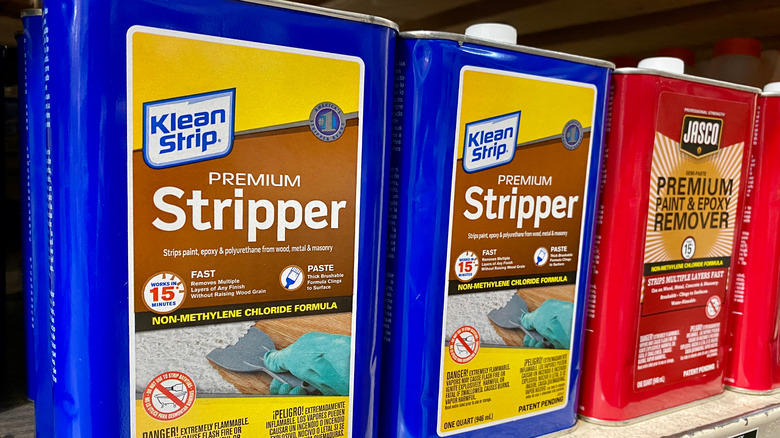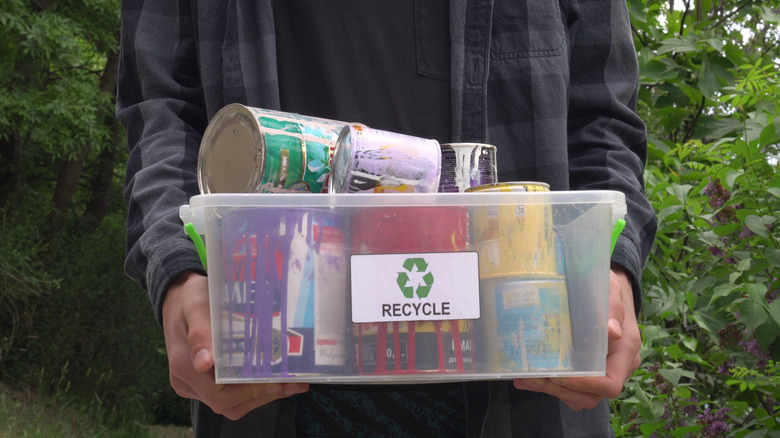The Right Way To Dispose Of Paint Stripper
Not many people realize that painting and everything else that goes with it can be quite toxic. You would be forgiven for thinking it's just a paint stripper, what is the worst that could happen? Great question! The experts at Oregon Metro write that paint stripper, also known as paint thinner, contains a lot of hazardous substances that could damage the environment, including acetone, benzene, carbon tetrachloride, methanol, and methylene chloride, to name just a few. Moreover, these toxic chemicals are also hazardous to human health and could impair growth and learning ability.
Additionally, Rawlins Paints & Coatings writes that paint strippers are highly-flammable substances, and the last thing you would want is to dispose of them in a place where they can catch fire. Another issue to consider is disposing of it where it could pollute the water system by seeping into the ground, so just how should you dispose of paint stripper safely?
Gear up and contain the waste
According to Everythingwhat, paint stripper can cause harm to a person by simply inhaling or touching it. Therefore, it is recommended to always work with a respiratory mask. This will filter the air you breathe and create a barrier between your organs and the harmful fumes. If the paint you are thinning out is from before the 1980s, Pro Paint Corner writes that it may also contain lead, which is not something that you want to breathe in. Next, you should also wear goggles to prevent any of the stripper from getting into your eyes, and don some protective boots and gloves too, because the chemicals could also burn your skin.
If you need to scrape out old paint or stripper, you must contain the products in a controlled environment. This is to avoid it spilling into the water system and causing contamination, writes the Wisconsin Department of Health Service. The best way to do that is to scrape the thinner and paint onto old newspapers or plastic bags, this way, dealing with the used stripper will be much easier. As soon as you are done, you can then get down to the actual business of throwing the hazardous substance away.
How to dispose paint stripper
Pro Paint Corner writes that the best option is to locate a hazardous dump site in your demographic. In the U.S. you can get a list of these at the United States Environmental Protection Agency. Alternatively, depending on your state, there are people who will collect toxic waste and drop it over at the dump site for you.
Meticulous disposing of excess stripper is just as important as throwing away the scraped down form. Due to its hazardous nature, the University of Missouri Extension calls paint stripper an accident waiting to happen. If you have any paint stripper left over, and you won't be needing it again soon, you can follow the above steps to dispose of it safely.
Another useful method is to simply let it evaporate into the air. According to Science Direct, paint stripper includes the ingredient dichloromethane, and as such, once open to the elements, it evaporates fairly quickly. The safest way to do that is to find an open spot, place the can of paint stripper where it is sure not to tip over, and just leave it to disappear.


